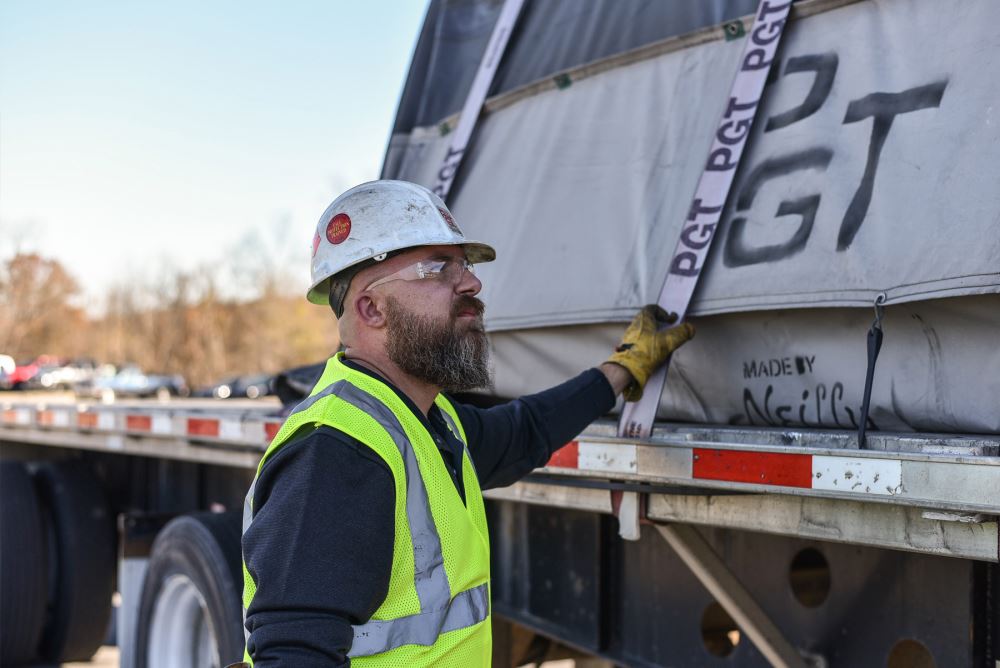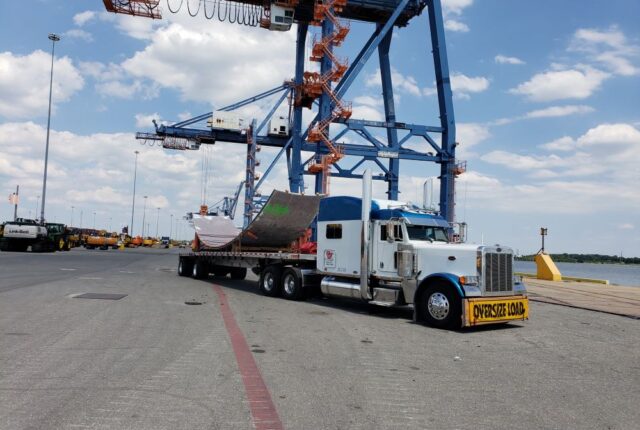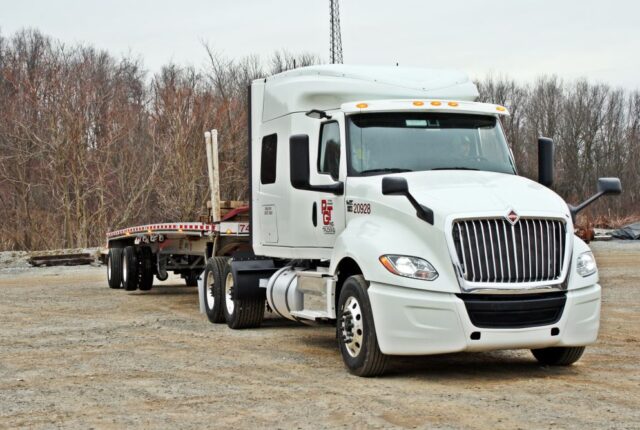
Load Securement: Our Top Five Tips to Avoid Injury
Flatbed truck driving is a lucrative career, and in 2021, PGT Trucking’s top earning company driver made over $127,000. There are numerous opportunities for drivers, but like with any transportation job, there are risks involved. One of the greatest challenges a flatbed truck driver faces is load securement.
Drivers are expected to properly secure their commodity to ensure the load remains undamaged and doesn’t shift during transport, but it’s just as important for our drivers to avoid personal injury. PGT is committed to safety, and that includes the safety of our drivers. These five practices will help drivers avoid personal injury on the job.
1. Properly secure the commodity and check your load often
Load securement is a key element in flatbed trucking. A properly secured load will not shift in transit, which helps drivers avoid accidents and injury. At PGT, we will provide you with the training, support and equipment you need to be safe and successful on the road. All PGT drivers are equipped with PGT’s load securement guide, which details the proper securement process for a variety of commodities. Our drivers also go through a full training and orientation program, regardless of experience, so that everyone follows PGT standards for safety and quality. PGT specifications go beyond the DOT requirements to ensure that our drivers’ loads do not shift.
Once a driver is on the road, load securement must be checked within the first 50 miles or one hour (whichever comes first), every 150 miles or three hours after (again, whichever comes first), at every change of duty status, and after a hard brake or evasive maneuver. Make sure your cargo has not shifted and retighten your chains/straps if necessary.
PGT drivers are empowered to Stop the Process! Our drivers have 24/7/365 support through our Operations, Safety, Risk, and Training departments and can reach out at any time they do not feel safe, are unsure how to secure a load or have any safety-related issue. When in doubt, Stop the Process, and get the help you need to confirm the commodity is properly secured.
2. Maintain three points of contact to avoid slips, trips and falls
Falling and tripping accounts for 30% of all work-related injuries, with over 50% of those injuries being critical. You can prevent slips, trips and falls by maintaining three points of contact on your truck/trailer any time you are climbing up or down, or maneuvering in a location where a fall is possible. This is especially important during inclement weather when you factor in the additional safety hazards of ice and wet surfaces.
Follow the “Three Point Rule”
The three points of contact system means three of four limbs are in contact with the vehicle at all times. This strategy works by creating a triangle of anchor points, keeping your center of gravity in the middle of the triangle.
Example:
2 feet and 1 hand
1 foot and 2 hands
3. Inspect your truck, trailer and equipment routinely
Pre- and post-trip inspections are required daily and every time you drop or hook to a different trailer, and all securement equipment should be inspected monthly. These inspections are an integral part of every road trip for a trucker.
A thorough visual inspection of your truck, trailer, equipment and load will identify any damage or defects and ensure everything is in proper working order. Never use damaged or defective equipment.
4. Wear proper personal protective equipment
As a flatbed truck driver, you will be required to wear PPE (Personal Protective Equipment) during load securement. This includes items such as:
Hard Hat
Eye Protection
Work Gloves
High Visibility Clothing or Vest
Safety Boots
Hearing Protection
Some customers, commodities or facility locations may require additional safety items as needed. PPE is an essential tool for a professional driver, lowering the risk of injury while you work.
5. Take your time
For most truck drivers, they are only paid for the miles they drive, so their time spent securing a load is not compensated. Drivers may rush the process and increase their likelihood of making a mistake, which can result in a serious injury. At PGT, we use a percentage pay package to compensate our drivers, which means our drivers are paid for the entire haul. We want our drivers to focus on safety, not mileage.
Take your time to properly secure the commodity and avoid injury! An extra ten minutes spent during securement will prevent injury and wasted time later on.
PGT Trucking Provides the BEST Driver Training and Orientation
PGT supports our drivers by giving them the training, equipment and resources they need to be successful flatbed truck drivers. Whether you have years of flatbed experience or just got your CDL-A, we will customize our training program to meet your individual needs. We are committed to being one of the safest and most reliable flatbed carriers in the industry.
When you drive for PGT, you’re part of the PGT family. We care about our drivers: we offer an industry-leading percentage pay package, great benefits including medical, dental and vision insurance, and more. If you’re looking for a CDL-A job, come join our team today!
Apply Now: Flatbed Trucking Jobs Near Me
Author
Benjamin TaylorRelated posts
When to transition to an owner-operator
Considering a career as an owner-operator/independent contractor? With the ever
Flatbed Trucking Jobs – A Guide for Truckers
With the national truck driver shortage, the demand for truck drivers is at an a
Million Mile Driver Spotlight #8
PGT Trucking introduces our new Million Mile Drivers this year, celebrating thei




